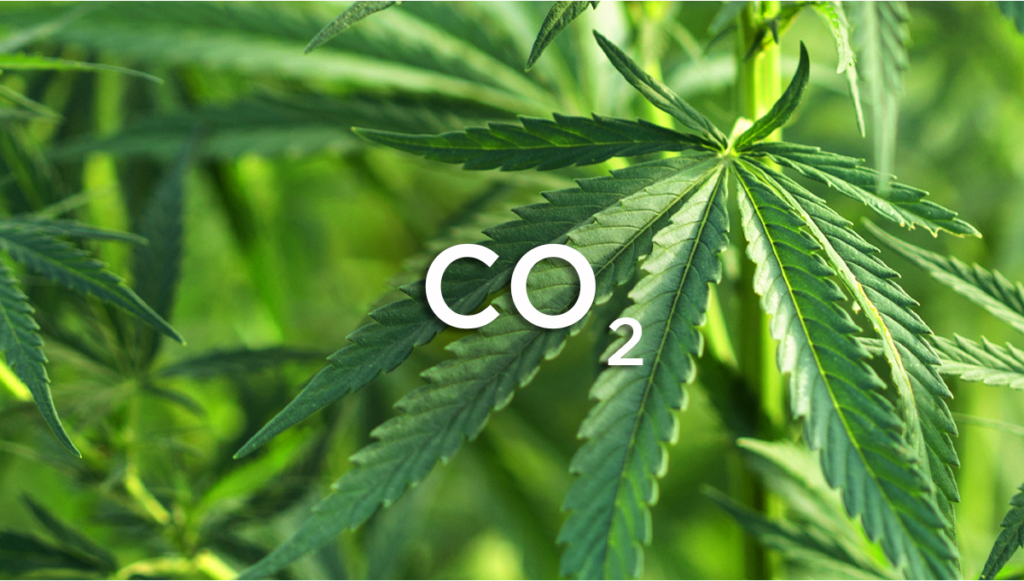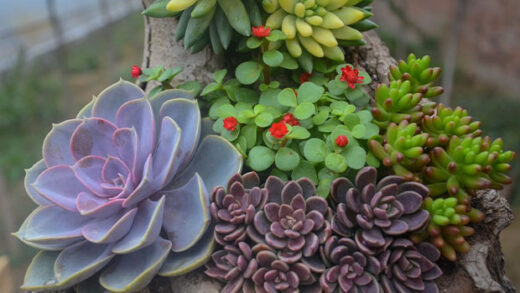A grow room, also known as a grow room, indoor garden, indoor farm, and sometimes a plant factory, is a specialized room located indoors that allows plants to grow under controlled conditions. If you’re an avid grow room grower, you need to understand the gas exchange that takes place and what happens when levels get out of control.
Excessive carbon dioxide emissions in confined areas such as growth chambers pose a serious threat to human health, sometimes resulting in death. We are here to tell you why and what you can do to prevent such problems from happening.
Table of Contents
Why Do Cannabis Plants Need CO2?
As every botany student has discovered, carbon dioxide is critical to the rapid growth and sustainability of plants. In the human respiratory system, people breathe air into the lungs, where they utilize oxygen (O) and exhale carbon dioxide.
Plants work in a similar but somewhat reversed way, taking in carbon dioxide (as well as water and minerals) through the stomata (holes through which plants “breathe”) under their leaves, and using this carbon dioxide to convert it into sugar and oxygen.
They use sugar for energy (growth) and release oxygen into the environment. The photosynthesis process relies on carbon dioxide to fuel plant growth. Without photosynthesis and the release of oxygen from plants and trees, humans would perish and the planet would cease to function as we know it.
In factories, CO2 levels of 200 ppm or less can have harmful effects. While your plants may continue to grow for a while, eventually, they will run out of stored sugar. When this happens, their metabolism is reduced and growth and development are stunted.
However, if they take in too much carbon dioxide, their growth also slows and photosynthesis stops. Proper carbon dioxide levels help optimize photosynthesis, increase yields, and better shoots.
Pros and Cons of How CO2 Affects Your Cannabis
We recommend planting some plants under your belt before you try adding CO2 to your garden. It is important to get the hang of growing cannabis with a basic setup before upgrading equipment and changing environmental conditions.
Here are some pros and cons to consider before attempting CO2 enrichment in your garden:
Pros
- Higher yields: In the right growing environment, CO2 enrichment can significantly increase yields.
- Faster Growth: Some growers have found that plants grow 100% faster when carbon dioxide levels reach 1500 ppm.
- Higher temperatures: If you use CO2, your garden can have higher temperatures (between 82º and 84ºF), which is ideal for growers who use a strong light and want to maintain optimal temperatures for their plants.
Cons
- Costly: Injecting CO2 into a room requires additional equipment (tanks and generators) and energy usage (ventilation for additional heat), which will increase energy costs.
- Grow Lights: If you have standard CFLs or T5s, you’ll need to invest in higher-wattage (and more expensive) lights, such as LED or HID bulbs.
Dangers of Too Much CO2 In A Grow Room

Carbon dioxide is a colorless, noble gas that occurs naturally in the atmosphere. Both plant photosynthesis and respiration require carbon dioxide, which is why this molecule plays a vital role in boosting and increasing plant yields.
Indoor plant growers utilizing growth chambers need carbon dioxide as a key ingredient for successful plant growth. Just like baking a cake, plants need recipes for photosynthesis. In this case, the ingredients for the “Growth Recipe” are water (H2O), light, and of course, today’s topic is carbon dioxide.
Photosynthesis is an important process of converting light energy into chemical energy through cellular respiration. It is this process that fuels the metabolic activity within the plant.
Too much carbon dioxide can be a problem, not only for the plants in the grow room but for you as well. As mentioned earlier, plants need carbon dioxide to survive but if given too much carbon dioxide and they run out of vital nutrients they produce. These include iron, zinc, and vitamin C. A sign of too much carbon dioxide in a plant is a thickening of the leaves.
Many houseplant growers are unaware of the potential dangers of elevated carbon dioxide levels in confined areas, known as grow rooms. A grow chamber works amazing because it captures everything inside, controlling the area where plants grow, but dangerous levels of carbon dioxide can cause serious human health problems.
Problems such as toxicity or lack of oxygen can occur when carbon dioxide levels rise to 5000 ppm, which is greater than the exposure we are used to. We start to feel disoriented with dizziness, may lose consciousness, and elevated carbon dioxide levels can even be fatal.
How Much CO2 is Too Much?
Carbon dioxide is measured in parts per million (ppm). The level of carbon dioxide naturally produced in our air hovers around 400 ppm. Botanical studies have shown that carbon dioxide can have harmful effects on humans once it exceeds 3000 ppm, and when it reaches 5000 ppm, it can be fatal. Plants, on the other hand, can survive and grow in environments with carbon dioxide levels in excess of 10,000 ppm.
When combined with good light, carbon dioxide levels around 1200 to 1600 ppm will significantly increase the growth of cannabis plants. At these carbon dioxide levels, plants can also tolerate and grow in high temperatures of 85 to 95ºF.
Carbon dioxide is a heavy gas and will sink to the floor of your grow room, so when providing supplemental carbon dioxide, it should ideally come from above the plants.
In some places, this is easier said than done, so adequate air circulation by the fan is critical. Fans should be a part of every growth anyway, but their importance is even more important when supplemental CO2 is used. Since there are several supplementary methods of supplying CO2 from the ground, it is especially important to run the fans at low levels to disperse the gas to higher levels.
When using CO2, you want your grow room to have air circulation and fresh air in, but not let too much CO2 escape. An adequately sealed room can benefit your plants, so keep in mind that if too many leaks occur, the benefit will be minimal or lost entirely.
Most experienced cannabis growers agree that plants benefit from carbon dioxide during most of their vegetative growth, from seedling to flowering.
How to Measure and Modulate CO2 In a Grow Room
We strongly recommend using CO2 tanks with CO2 regulators – these tanks release a certain amount of CO2 into the room via a timer. This reduces the likelihood of serious errors.
Since CO2 is difficult to detect, at Atlas we have a CO2 sensor which is a compact non-dispersive infrared sensor that helps you read CO2 levels (ppm). With the ability to read CO2 levels from 0-10000ppm, you’ll never reach toxic levels!
How Much CO2 Should You Add to Your Grow Room?
With our sensors, you can regulate the amount of carbon dioxide in your growth chamber. You can calculate how much carbon dioxide a grow room needs to release by determining the volume of the room: length x width x height.
Once you have the volume of the growth chamber, you need to multiply it by the amount of CO2. For example, if your carbon dioxide level is 0.2% (2000 ppm), you multiply the room volume by 0.002 (0.2%).
To calculate how long the valve should open, divide the hourly flow by the cubic feet of gas required.
If this sounds too technical, there are plenty of online CO2 calculators for growing chambers.
Summary
You should now be more aware of the effects of too much carbon dioxide in the growth chamber.
Your grow room is designed to grow high-yielding plants, right? Well, give them too much and they will use up the vital nutrients they produce. Also, keep in mind that CO2 leaks can be fatal to humans, so keeping your grow space well-equipped is critical.

















